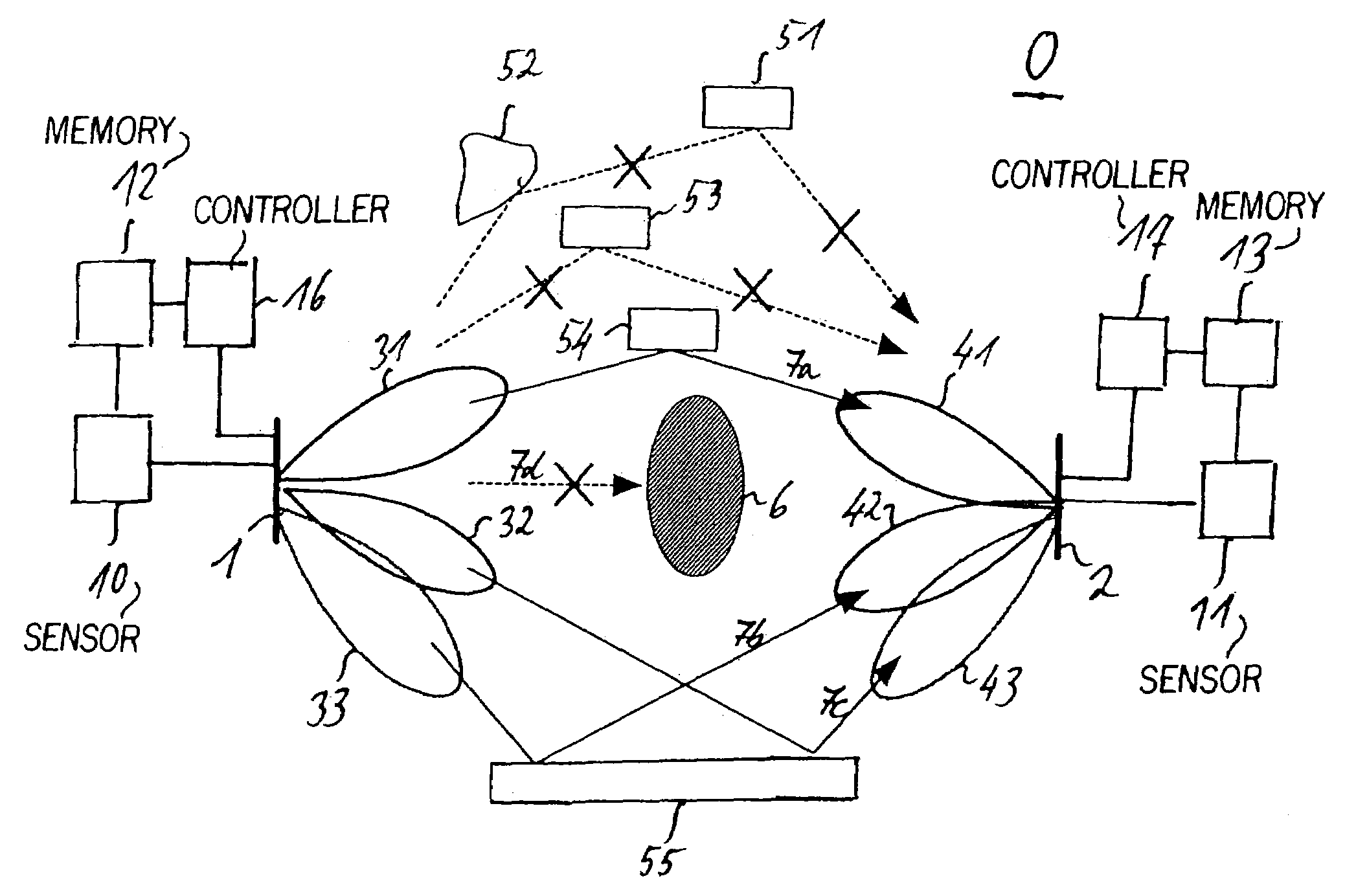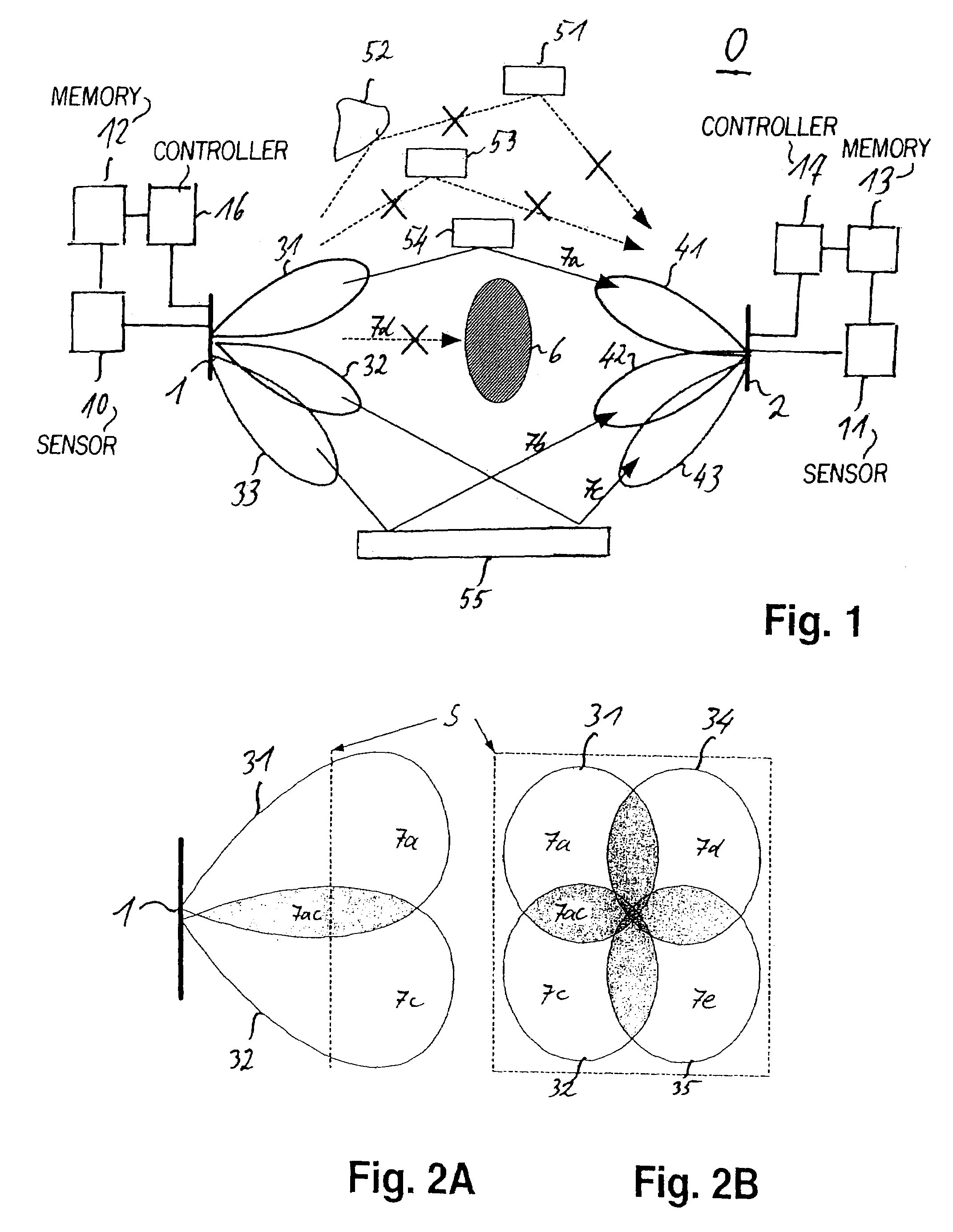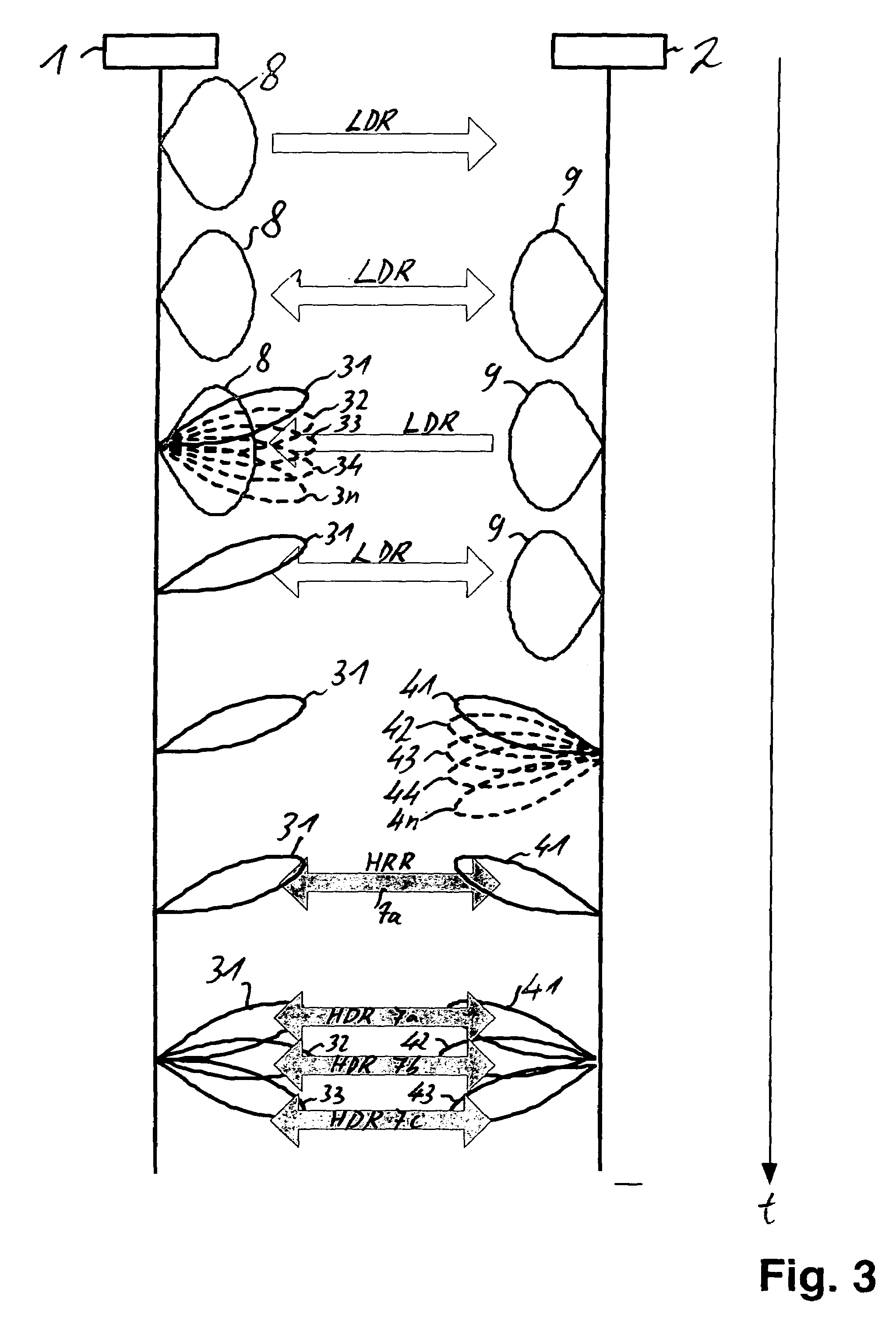Communication system and method
- Summary
- Abstract
- Description
- Claims
- Application Information
AI Technical Summary
Benefits of technology
Problems solved by technology
Method used
Image
Examples
Embodiment Construction
[0107]In the following, a preferred embodiment of the inventive communication system is explained by reference to FIG. 1.
[0108]The communication system 0 comprises a first station 1 comprising three first narrow beam antennas 31, 32, 33 and a second station 2 comprising three second narrow beam antennas 41, 42, 43.
[0109]In the present embodiment, both the first and second narrow beam antennas 31, 32, 33, 41, 42, 43 are smart antennas.
[0110]The first and second stations 1, 2 are adapted to establish at least one first communication path 7a and one further communication path 7b, 7c for wireless communication via said first and second narrow beam antennas 31, 32, 33, 41, 42, 43 at the same time.
[0111]Said further communication path 7b, 7c is spatially different from said first communication path 7a.
[0112]Thus, according to the present invention, usage of several pairs of narrow (sharp) beam antennas 31, 32, 33, 41, 42, 43 for both a sending and receiving side of the station 1, 2 is pr...
PUM
 Login to View More
Login to View More Abstract
Description
Claims
Application Information
 Login to View More
Login to View More - R&D
- Intellectual Property
- Life Sciences
- Materials
- Tech Scout
- Unparalleled Data Quality
- Higher Quality Content
- 60% Fewer Hallucinations
Browse by: Latest US Patents, China's latest patents, Technical Efficacy Thesaurus, Application Domain, Technology Topic, Popular Technical Reports.
© 2025 PatSnap. All rights reserved.Legal|Privacy policy|Modern Slavery Act Transparency Statement|Sitemap|About US| Contact US: help@patsnap.com



